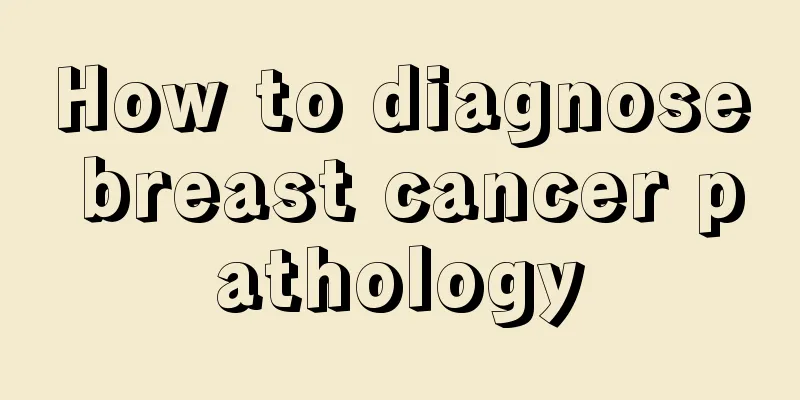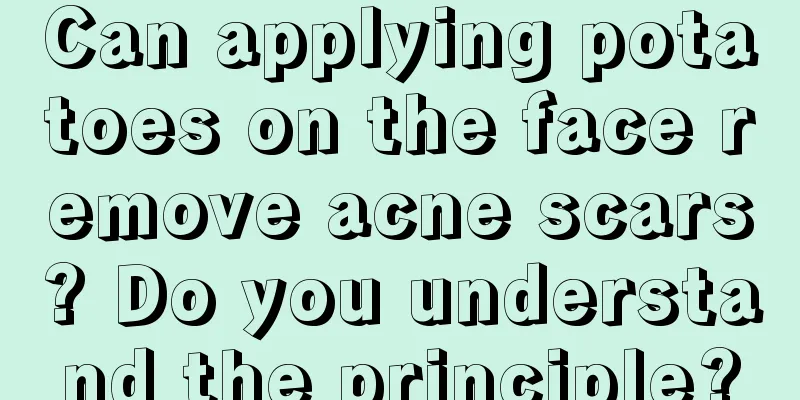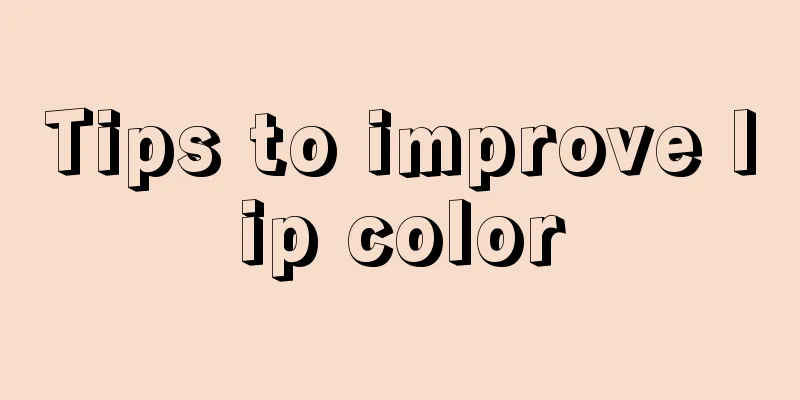What is the fastest way to relieve itching of wind pimples?

|
Wind bumps, also known as urticaria, are a common skin disease in daily life. It is caused by edema of the mucous membrane blood vessels under the skin, which can easily lead to bumps on the skin surface and cause unbearable itching. There are many ways to quickly treat the itching of wind bumps. You can apply topical medications for treatment first, or you can reduce sweating and avoid eating allergic foods. How to quickly relieve itching of wind pimples Because the causes of urticaria vary, the treatment effects are also different. The specific treatment measures are as follows: (1) Eliminate the cause. Every patient should strive to find the cause of the attack and avoid it. If the cause is infection, the infected lesions should be treated actively. If the allergy is caused by drugs, the allergy medication should be stopped; if the allergy is caused by food, find out the allergic food and stop eating this food. (2) Avoid triggering factors. For example, for cold urticaria, you should keep warm; for acetylcholine urticaria, you should reduce exercise, sweating and mood swings; for contact urticaria, you should reduce the chance of contact. Drug treatment (1) Antihistamines ①H receptor antagonists have strong anti-histamine and anti-other inflammatory mediator effects and are effective in treating various types of urticaria. Commonly used H1 receptor antagonists include diphenhydramine, cyproheptadine, chlorpheniramine, acrivastine, cetirizine, mizolastine, loratadine, ebastine, azelastine, desloratadine, etc.; when single treatment is ineffective, two different types of H1 receptor antagonists can be used in combination or in combination with H2 receptor antagonists. Commonly used H2 receptor antagonists include cimetidine, ranitidine, famotidine, etc. It is effective for acute, chronic urticaria and cold urticaria. Dosage varies from person to person. ② Doxepin is a tricyclic antidepressant that is particularly effective for chronic urticaria and has fewer adverse reactions. Doxepin is a better choice of drug for patients with urticaria who are not responsive to traditional antihistamines. (2) Drugs that inhibit mast cell degranulation and reduce histamine release ① Meta-hydroxyisobutyrine sulfate is a β2 adrenergic receptor stimulator that can increase the concentration of cAMP in the body, thereby inhibiting mast cell degranulation. ② Ketotifen inhibits mast cell degranulation and prevents the release of inflammatory mediators (such as histamine, slow-reacting substances, etc.) by increasing the concentration of cAMP in the body. Its suppressed. It is stronger and faster than sodium cromoglycate and can be taken orally. ③Sodium cromoglycate can block the binding of antigen and antibody and inhibit the release of inflammatory mediators. If used in combination with glucocorticoids, the dosage of the latter can be reduced and the therapeutic effect can be enhanced. ④ Tranilast reduces the release of histamine by stabilizing the mast cell membrane. (3) Glucocorticoids It is a second-line drug for the treatment of urticaria. It is generally used when severe acute urticaria, urticarial vasculitis, pressure urticaria are ineffective with antihistamines, or when chronic urticaria is severely stimulated. It is given by intravenous drip or orally, and long-term use should be avoided. Commonly used drugs are as follows: ① prednisone; ② triamcinolone; ③ dexamethasone; ④ diprosone. In emergency situations, hydrocortisone, dexamethasone, or methylprednisolone is given intravenously. (4) Immunosuppressants When patients with chronic urticaria have an autoimmune basis, the disease recurs, and the above treatments cannot achieve satisfactory results, immunosuppressants can be used. Cyclosporine has a good therapeutic effect. Azathioprine, cyclophosphamide, methotrexate and immunoglobulin can all be tried. Tripterygium wilfordii also has a certain therapeutic effect. Due to the high incidence of side effects of immunosuppressants, they are generally not recommended for the treatment of urticaria. In addition, drugs that reduce vascular permeability, such as vitamin C, vitamin P, calcium supplements, etc., are often used in combination with antihistamines. If it is caused by infectious factors, appropriate antibiotics can be used for treatment. |
<<: What should I do if I have itchy bumps all over my body?
>>: What causes hard bumps under the skin of the neck?
Recommend
What is the white frost on the grape skin
The nutritional value of grapes is very high. For...
Does sweat reduce inflammation?
Sweat is a fluid secreted by the skin of the body...
What is normal intraocular pressure?
The normal intraocular pressure range is 10-21 mm...
What should I do if my feet get blisters from shoes?
The health of the feet needs to be paid special a...
Knee pain after drinking
Whether it is during festivals or at work, people...
The best way to unclog blood vessels
Blood vessels are an important part of the human ...
Can sprouted mung beans be eaten?
In our daily life, we often see bean foods. When ...
Tips on how to deal with a crooked neck when sleeping
Having a stiff neck while sleeping is a very emba...
What are the benefits of doing chest expansion exercises
Exercise is a very important thing in life, becau...
What are the indoor hydroponic plants
For newly renovated houses, owners like to place ...
How big is the incision of thyroid cancer?
The size of the surgical incision for thyroid can...
What should I do if my teeth hurt due to cold
Teeth are a very important part of the human body...
Can Boric Acid Solution Treat Eczema?
After entering autumn, the weather is dry and the...
How long can fat grafting last
People have fat in their bodies. Some places have...
What are the symptoms of depression
Depression is a very scary symptom for patients, ...









